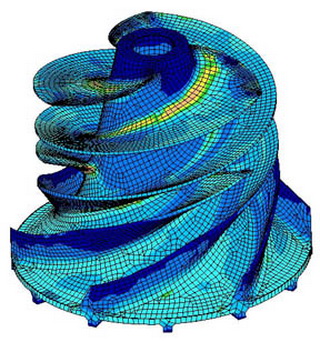A Game Show host approaches you on the sidewalk and asks you a 100 dollar question: “What is the area inside a 10 foot by 10 foot square?” (insert tick tocking theme music here) Somewhere in the back of your mind you would probably remember the formula Length times Width and shout out, “100!” Correct… You’re a winner! Now for double or nothing, “What is the area inside a 5 foot by 10 foot rectangle?” Still Length times Width, right? “50!” You win again!
Now that your brain is firing in the right direction, let’s up the ante.
Imagine that 5’ X 10’ rectangle lying on its long side. But this time, instead of a flat top line, the top side of it is curved upward, making the whole thing look like the side profile of a loaf of bread drawn on a piece of paper. Hmmm. How to figure the area under that top curvy part? Length X Width doesn’t apply anymore. Or does it?
What if you placed some rectangles (we know how to calculate the area of those) vertically inside the shape so that they fill up most of it. That gets us close. The rectangles do a fine job capturing most of the area under that curvy part. But there is still some area unaccounted for where the edgy angles of the rectangle meet the curvy. Now here comes a really cool part: If you make the rectangles smaller and put more of them in, you’ll notice that the unaccounted for gaps get smaller as well! Mathematically, there is a way to shrink these rectangles to the point where the gap is inconsequential. Voila! You can now figure the area under the curve! Welcome to one of the basic concepts of Finite Element Analysis (FEA)!
Similar techniques can be used to measure stress and loads on objects. Figuring the stress load of a length of metal wire is relatively simple. You’ve got two ends. You clamp one end down and pull on the other end until the wire breaks. Do this enough times and you can reliably say at what point (or load) that wire would break. However, if presented with a strange shape (let’s imagine a boat’s propeller), this is no longer simple. The stress encountered at the tip of the thin edge of the propeller would be different than that of the thicker base in the middle, right? Buy what if the propeller could be broken down into smaller pieces (perhaps thousands), each with its own geometry and boundary conditions? Now the equations for the stresses in each little piece are much easier to calculate. If you allow for how each piece would react to a given stress and had a fast computer equipped using some clever math, a solution as to how the whole object would react is possible to calculate.
So instead of seeing one big object, FEA essentially perceives a piecewise continuous relationship of objects. It then obtains the parameters of how these pieces function both independently and with each other and does this in such a way that reduces the error in the solution (remember the smaller rectangles?). Finite Element Analysis is a method to computationally model reality in a mathematical form to better understand a highly complex problem.
Why use FEA or other computer analysis?
Imagine you design a new jet. You would want to build a prototype and test it before you sold it to people, right? The first one might crash and burn in the test. So would the second. Eventually, after a lot of time and money, you would get a workable product. Wouldn’t it be easier, cheaper, faster and safer to have a computer model of how the new vehicle would react to loads and stress and then test the vehicle virtually until you had all the major kinks worked out? As a test pilot climbing into the cockpit to take it for its first flight, wouldn’t you breathe easier if the new concept jet had been virtually tested over a thousand times and modified to make it safer?
Okay, so FEA is great for designing stuff but how does it apply to forensic investigations?
Any forensic investigation into failure analysis that wishes to be credible is based on some type of scientific methodology. At some point a hypothesis is formed and that hypothesis needs to be tested. The same advantages (cheaper, safer, faster, etc.) apply to computer modeling versus physical modeling.
If software is available to do the hard math, why do I need an engineer to run it?
Simply put: If you put garbage in you will get garbage out. The solution the software spits out will be completely meaningless if the relevant parameters are not properly identified and defined. You have heard that it takes longer to prepare a room to be painted than the actual time it takes to paint? The same concept applies to FEA. If a great deal of care is not taken setting up the problem, one can easily see how error accumulation during the numerical computation process can quickly make the solution ridiculously useless.
CED has engineers with the appropriate mathematical academic background and forensic experience who can prepare and run a FEA analysis. They understand the underlying science behind the problem and can solve simple Finite Element Analysis problems using hand calculations or solve more complex problems using properly setup software. Please call today at 800.780.4221 to discuss a possible case or claim.






